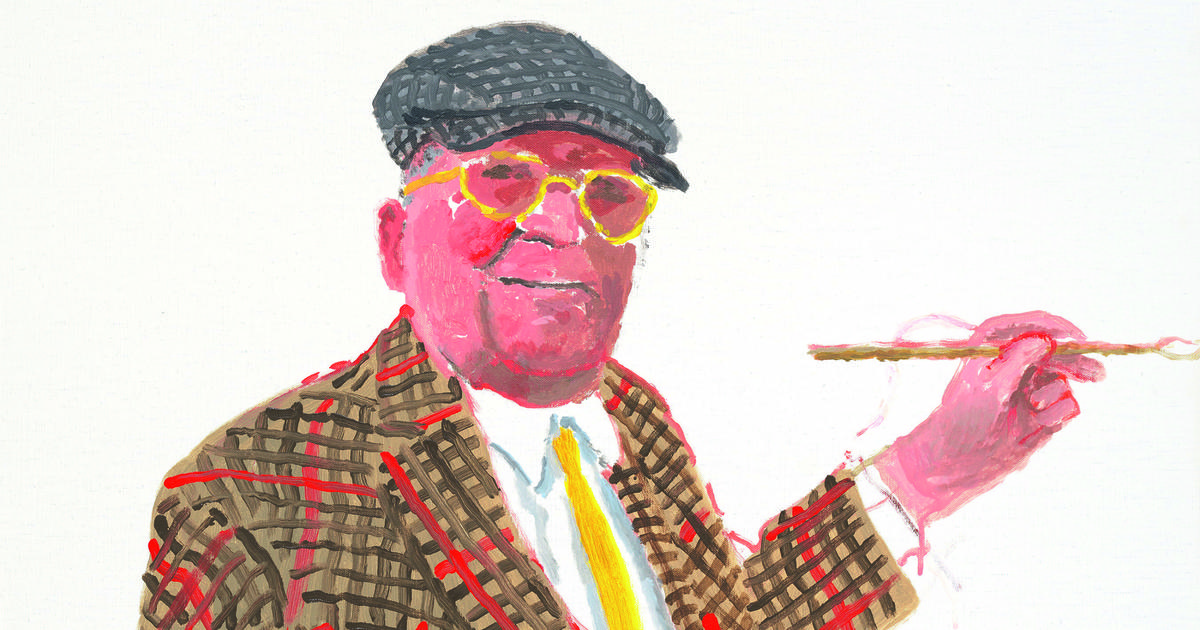Basel, the third most populous city in Switzerland, is famous throughout the world for an economic power marked by a pharmaceutical industry (Novartis, Roche) sometimes questioned and others applauded for its research.
Perhaps in the wake of that economic power, its cultural treasures are the envy of world collectors.
Not in vain here is the opening of the most important art fair in the world (Art Basel), an event that allows its clients to stroll through the 40 museums in the city that they now take advantage of for grand openings.
The most relevant, without a doubt, deals with the relationship between Picasso and El Greco.
From today until September 25, it is exhibited at the Basel Kunstmuseum, the city's art museum, and supports a totally innovative thesis:
El Greco's (1541-1614) influence on Picasso's work was not limited to his blue period, but his influence was essential for Cubism and decisive for all of the artist's subsequent work.
The fascination with Cretan began in his apprenticeship years and continued until the end of his life.
More information
The irresistible modernity of El Greco
The setting to argue this extraordinary thesis is the ground floor of the old museum building.
There, 80 paintings have been gathered, with which some 34 pairs of paintings are formed before which the viewer can verify that connection of colours, composition and expression.
Carmen Giménez, one of the world's leading experts on Picasso, has been responsible for being able to develop an investigation that began about seven years ago with her great friend Francisco Calvo Serraller (art critic for EL PAÍS and director of the Prado, who died in 2018) , to whose memory this exhibition is dedicated, which will travel to the Prado Museum in the autumn, in a reduced version of 9 pairs of paintings.
A large black-and-white photograph dated August 1934 shows Pablo Picasso with Olga Koklova, his first wife, at El Greco's house in Toledo.
The beautiful image gives rise to a chronological journey through the exhibition that Carmen Giménez considers unrepeatable, because "nobody wants to lend anymore and because the price of insurance makes it almost impossible for masterpieces to leave their usual dens with guarantees."
On Wednesday afternoon, during the final assembly of the exhibition, Carmen Giménez gave a detailed tour of the exhibition before a group of three Spanish journalists invited by Tourism of Switzerland.
The prestigious Spanish expert (Casablanca, Morocco, 79 years old) was accompanied by her friend Paloma Picasso, daughter of the painter and Françoise Gilot, who has worked with the curator in setting up the exhibition.
One of the sample comparisons.
Kunstmuseum Basel - Jonas Hänggi
On gray-blue walls, the parade of works by the two artists begins.
The chronological order requires beginning with the first drawings in which the 14-year-old from Malaga reproduces details of El Greco's characters: ears, eyes, necks, torsos.
Giménez recalls here that Picasso's father was also a painter and when his son was 14 years old he enrolled him first in the School of Fine Arts in Barcelona and, later, at 17, in the Royal Academy of Fine Arts in San Fernando, where He received unbeatable marks in his entrance exam.
"However, letters and drawings from that time show that instead of attending art classes at the Academy, he spent his days copying the old masters at the Prado Museum."
After the drawings begins the festival of comparisons by pairs of paintings whose contemplation is not closed to other works.
They are not two isolated pictures excluded.
Some are part of others.
To start with the highlights, you can choose the pair formed between Picasso's blue self-portrait (1901) that hangs next to
El Greco's Portrait of an Old Man
(circa 1595-1600), on loan from the New York Metropolitan.
The Burial of Casagemas
(1901) is exhibited next to
The Adoration of Jesus
(circa 1577-79), from the El Escorial Monastery.
A visitor passing through the exhibition.
Photo: Julian Salinas
Another glorious combination is made up of two portraits of women that have served for the advertising poster installed throughout the city.
They are Mrs. Casals (1905) and the
Lady with an Ermine
(1580-88), a work by Sánchez Coello that was attributed to El Greco for a long time.
No less striking is the pair formed by
The Virgin Mary
(circa 1590) from the Museum of Fine Arts in Strasbourg together with the portrait of a woman (1907) for
Les Demoiselles d'Avignon.
Picasso brings to the portrait of his Barcelona prostitutes the same air of mystical sweetness with which El Greco imbued the mother of Jesus Christ.
There are also conflicting couples who cannot hang together due to curious demands of their owners.
This is the case of
Christ saying goodbye to his mother
(around 1595) and
The Couple
(1967).
Her bare breasts have led the Archdiocese of Toledo, owner of this painting deposited in the Santa Cruz Museum, to set conditions.
They have lent them, but the canvases hang on different walls.
"They are facing each other," the curator explains with a smile.
"The viewer will know how to watch the game."
On at least four occasions, Carmen Giménez addressed the issue of the relationship between El Greco's painting and that of Picasso.
Exhibitions have been held in New York, Paris and Madrid.
Is there anything else to discover in that relationship?
“The exhibitions are worked on by Francisco Calvo and me.
And I can assure you that there is nothing more to add on this topic.
I close the investigation."
Paloma Picasso: “All you need is Pablo”
Paloma Picasso (Vallauris, France, 73 years old) has traveled to Basel to collaborate with her friend Carmen Giménez in the exhibition and to talk about her father in a city that feels historical adoration for the painter from Malaga.
On Thursday she told the press that she was with her father when the artist found out that the population was mobilizing to ensure that two of the artist's works
(The Two Brothers
and
Seated Harlequin) did not leave the museum.
It was autumn 1967 and a plane crash left Staechelin, the main shareholder of the airline affected by the accident, in ruins.
The citizen campaign had a slogan that moved the artist: All you need is Pablo (All you need is Pablo).
The campaign paid off and they got enough donations for the two paintings to stay in the Museum.
Picasso went to Basel and gave them no fewer than four paintings.
Picasso's daughter acknowledged that she adored her father's work, but that she was not a trained collector because hers had been an inheritance.
And she came out without hesitation in defense of his father when she was reminded that there are voices that accuse his father of machismo, including his own mother, Françoise Gilot: "He was not mistreated or any macho" .
"These accusations are disgusting," concluded Carmen Giménez.
50% off
Exclusive content for subscribers
read without limits
subscribe
I'm already a subscriber








/cloudfront-eu-central-1.images.arcpublishing.com/prisa/Z4UBGLQEOBHVJGLHLVFFREHAC4.jpg)





